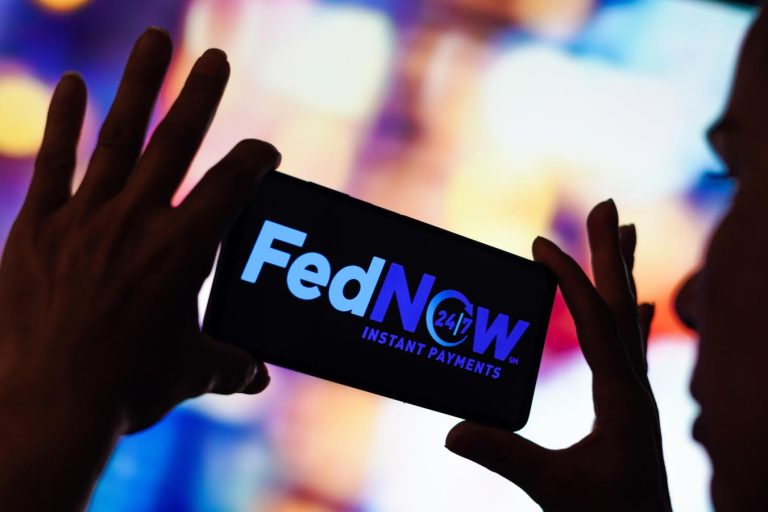OBSERVATIONS FROM THE FINTECH SNARK TANK
It’s a funny paradox. The Federal Reserve Bank’s launch of FedNow in July 2023 promised that consumers and businesses would be able to pay for groceries, pay their suppliers, and pay each other “instantly” with full and immediate access to funds.
But banks are moving slowly down the path to “faster” or “instant” payments.
The need to integrate systems, deploy new fraud prevention and management mechanisms, and create new operational procedures are critical to any real-time payments offering—and are slowing the rollout of the new payment capabilities.
There’s a missing ingredient in the instant payments equation that many banks are overlooking, however, that could help accelerate the roll out and adoption of instant payments, particularly among businesses. The missing ingredient? Marketing.
The Revenue Opportunity From Faster Payments
Research from Accenture found that more than half of banks are losing wallet share—and revenue—to Big Tech and fintech competitors. In an article titled The Payments Blindspot That Could Cost Banks Billions, Accenture’s Michael Abbott wrote:
“Commercial payments have been the sleepy backwater of payments. Most banks see commercial payments as a cost center rather than a source of growth. Now that interest rates have linked deposits with revenue again, banks should see commercial payments as tremendously valuable.”
The Accenture study estimates that, globally, commercial payments providers have a $371 billion revenue opportunity from providing value-added services (of which real-time payments is one type of service) over the next five years.
Far from seeing instant payments as a revenue generator, many banks are concerned that real-time payments will result in a loss of revenue by cannibalizing their wire business, according to Tony Hayes, founder of the Banking & Payments Group.
This concern is misplaced. Hayes points out that:
“Businesses report a willingness to pay for speed, with ~$2.50 being seen as a fair price for sending $1,000, while nearly $100 is seen as reasonable fee for both sending and receiving $100,000 more quickly. Far from cannibalizing wire income, if priced correctly, real-time payments could boost forward-thinking banks’ income.”
“If Priced Correctly” Is A Big Assumption
“If priced correctly” is a big if, however. Pricing—particularly for fee-based services—is hardly a strong point for many financial institutions.
Hayes’ comment “if priced correctly” begs the question: What, exactly, needs to be priced correctly?
At a recent payments conference, a number of bankers referred to FedNow as a “solution.” This is a misconception. Better to think of FedNow as a “capability.”
You don’t price—and sell—capabilities. You package capabilities into a solution—a “product” or “service offering”—then determine what pricing options are most attractive to your target market and market the solution to them.
Commercial banking clients—small businesses, in particular—don’t simply want “faster payments.” They want better cash management, simplified payments processing, automating invoicing, less cumbersome accounting processes, etc.
Matt Brown, an investor at Matrix Partners, captured this idea in a recent blog post where he wrote:
“B2B payments aren’t payments, they’re workflows. If you view B2B payments not just as a payment problem, but one at the end of a string of workflows, it creates more surface area to actually create a 10x solution by improving the preceding workflows rather than being limited to the payment itself.”
This is what banks should be offering (that is, selling). From what I’ve seen and heard, however, there isn’t a lot of thought going into how to create and price a faster payments solution.
Capitalizing On The Faster Payments Revenue Opportunity
Bankers should be worried about this.
Bank marketing departments aren’t (typically) pricing experts because banking is the only industry on the planet where pricing is done by the finance department, not the marketing department. To capitalize on the instant payments revenue opportunity, bank marketers will need to:
- Segment the market. Some businesses need faster access to capital, some prioritize integration into their accounting systems, while others have other needs that instant payments can address. How does a bank’s commercial customer base fall out across the various needs? Which of these needs is the bank best suited to meet?
- Design a product or service offering. A faster payments product (or solution) is not simply a menu of FedNow transaction types. It’s a bundling of capabilities into a cohesive and coherent package that solves a need for the market segment(s) a bank is looking to address. Creating this bundle might require a bank to partner with other providers—e.g., fintechs, accounting system providers, payment processors—to create the offering.
- Determine pricing options. Is a per-transaction charge really the best (and only) approach? How about a “subscription fee” that, for a fixed monthly price, offers a small business an unlimited number of faster payment-related transactions? The number of pricing options isn’t infinite, but it’s certainly not as simple as coming up with a list of transaction fees.
It’s important for banks to recognize that the battle for commercial payments revenue growth isn’t just among banks. Just six on 10 businesses said they would prefer to get real-time payments services from banks, with 37% naming fintech and Big Tech companies as their preferred providers, according to Accenture.
Want to hear more about the revenue opportunity from B2B faster payments? Join Ron Shevlin on December 5 for a webinar on “New revenue opportunities for banks: B2B real-time payments.” Click here to register.
Read the full article here









